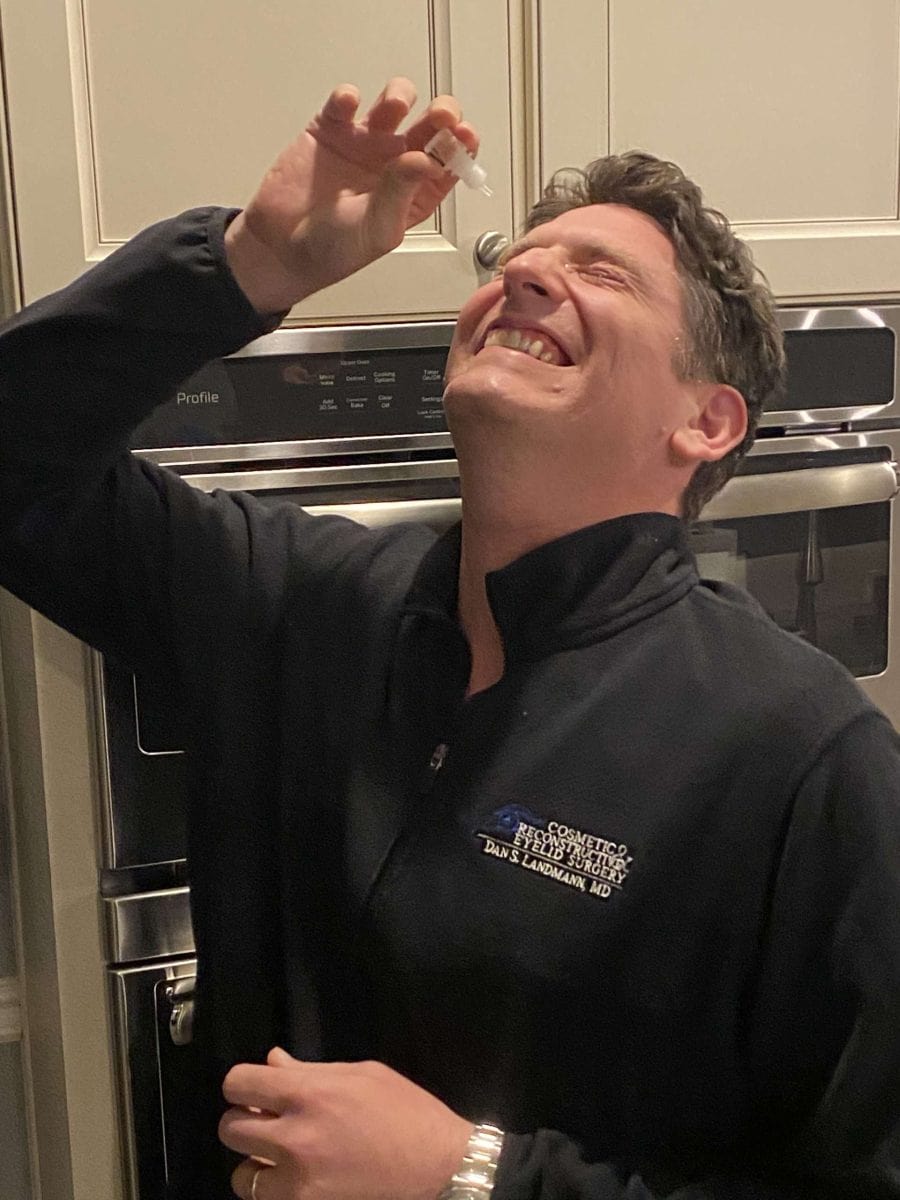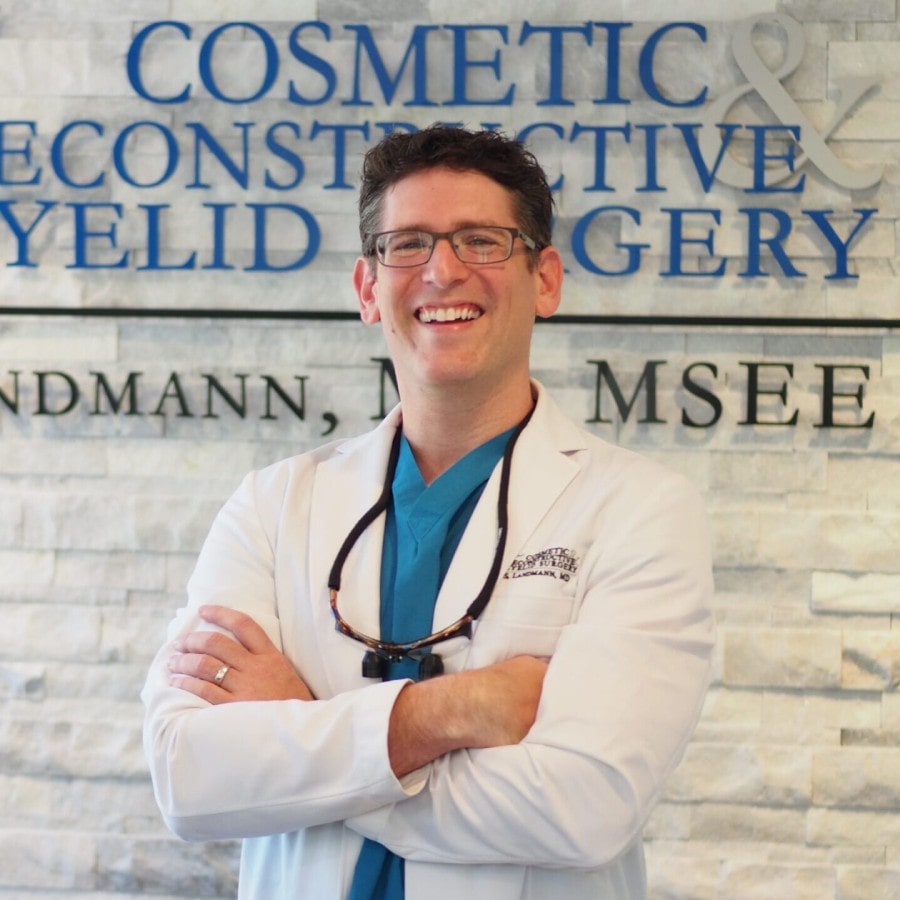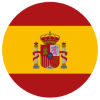Have a Stye, Eyelid Infection or Eyelid Cancer?
Stye Struggles No More:
Overcoming Challenges with Confidence
Get an online Consultation
With An Eyelid Doctor Right Now
- Dr. Dan Landmann, A Board Certified Ophthalmologist, Will Examine And Treat Your Eyelid Problem Today
- It’s Simple: Answer 20 Questions & Upload A Photo
- He’ll Evaluate Your Problem, Answer All Your Questions
- He Will Call An Antibiotic Directly To Your Local Pharmacy, Immediately
- The Fastest & Easiest Way To Get A Prescription Antibiotic Medication For Your Eyelid Problem
- We’ve Treated Thousands Of Styes
How to Get Rid of your Stye in
3 Easy Steps
No appointments necessary. No time off from work. $89 consultation fee. No copay. No deductible.

Tell Us About Your Stye
Fill out our quick, easy and secure online consultation form.

Snap a Photo
Upload a photo of your stye without even leaving your couch or office!

Get Treated, Fast!
Dr. Dan Landmann will review your info, then design a customized treatment plan and prescribe an Antibiotic/Steroid to your pharmacy.
What Is a Chalazion?
How do you pronounce Chalazion?
I usually pronounce it like this: Cha·lay·zee·uhn. But some people pronounce it like this: kuh·lay·zee·uhn. It’s definitely a very odd word to pronounce. It’s derived from the Greek “khalaza,” which means hail, hailstone; small lump or knot; pimple. However you pronounce it, it definitely feels like a little piece of hail is stuck in your eye!
What Is a Hordeolum ?
A Hordeolum is different than a chalazion. A hordeolum is an acute eyelid infection. This is usually caused by bacteria. If you were fine yesterday and had no symptoms at all, but then woke up one day and all of a sudden your eyelid is red, hot, tender, and there is a painful bump - then that is probably a Hordeolum. Hordeolum do typically get a lot better with oral antibiotics and eye drops, but sometimes once the acute infection resolves, you are left with a bump on your eyelid. That bump then gets called a chalazion.
What’s the difference between a Chalazion and A Stye?
A Stye is the non-technical term for either a Chalazion or Hordeolum.
Most doctors wouldn’t use the term if they were speaking to another doctor or writing something technical.
The term stye is thrown around loosely and means different things to different people.
Do I need any special tests to diagnose a Stye or Chalazion?
What else can it be if it's not a Chalazion?
How long will it take for a stye to go away?
As soon as you get a stye, the first thing you want is for it to go away! So “Not soon enough” would be one answer. There’s a really wide range. I’ve seen a lot of patients that had a little mini stye, which went away in the course of a few hours with just warm compresses. I’ve also had some myself that were pretty uncomfortable but then resolved after a few days because I was able to immediately apply an antibiotic drop to the stye. On the flip side, I’ve seen many patients that have had styes for months or even years. Yes, years! I feel bad for these patients because if they had come in sooner, we would have been able to treat them sooner so they can move on with their lives.
Are styes
contagious?
The good news is that styes are not contagious. The bad news is that you can’t get a note to skip school or work because of a stye. Haha, just kidding, we’ll email you a note if you need one.

What Kind of Stye Ointments or Drops Are There?
- Drops are usually very liquid-y, which is good because they are easy to administer.
- Ointments are a lot thicker, which is good because they are more soothing, but they can make the vision blurry.
- Gels are in between.
- Antibiotics – kill bacteria! However, there are several different antibiotics. Some are very irritating to the eyelid skin, and some are less irritating. It is very common to form a reaction to antibiotics used on the eyelids after several days.
- Steroids – decrease inflammation. Some are very potent, and some are less potent. You should never use steroids without supervision from an ophthalmologist, as they can have a lot of side effects. Namely, cataracts, glaucoma, viral, bacterial, and fungal infections, loss of vision, and worsening the problem.
- Combo Drops – Sometimes manufacturers will combine steroids and antibiotics for ease of use.
- NSAIDS – non-steroid anti-inflammatory medications.
- Antifungals
- Anti-virals – kill viruses, most commonly Herpes
- Lubricants / Emollients / Moisturizing – these will make you more comfortable. The big popular brands are what I usually recommend: Systane, Refresh, Tears Naturale, and Optive. I typically don’t recommend the generic brands, like Costco, CVS, or Walmart – because they sometimes use an inferior preservative which can be irritating to some people.
When Should You See an Ophthalmologist in Person For A Stye?
- Redness and swelling that is on the entire eyelid. Or if you have a fever, feel chills, shivers, or have muscle aches. If you fill out the treatment form here, Dr. Landmann will be able to evaluate you right away and call in an oral antibiotic and/or antibiotic eye drop directly to your pharmacy.
- The stye doesn’t resolve after a month of using warm compresses. If you fill out the treatment form here, Dr. Landmann will be able to evaluate your stye and explain all your treatment options, probably in more detail than you would ever get by going to a doctor in person!
- It is normal for your vision to be very slightly blurred with a stye, but if it is more than just a little bit blurred in that eye, then you should also see an eye doctor.
- The stye is on your child, who is 8 years of age or younger. A child’s vision develops until about age 8-10 years old. Styes can push on the eyeball and distort the vision, permanently affecting the child's visual development.


